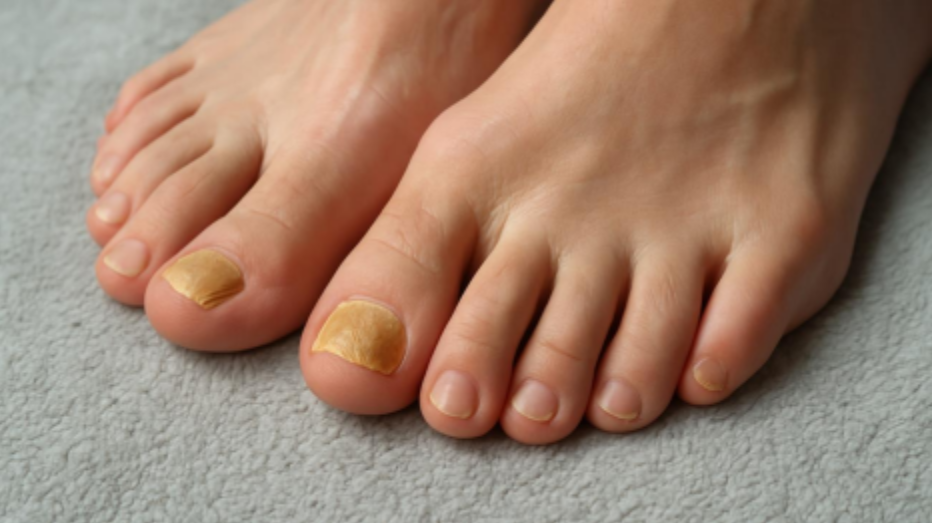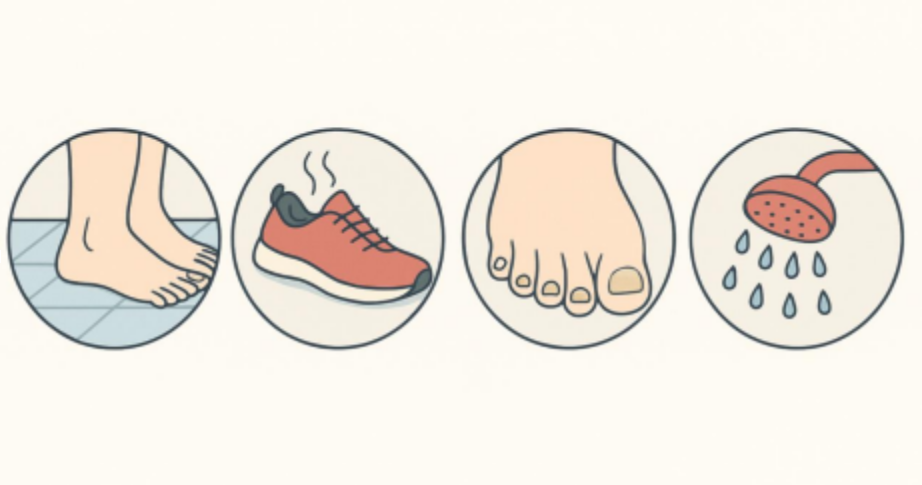Toenail Fungus 101: What Causes It, How It Spreads, and Early Signs to Look For
November 20, 2025

Toenail fungus is far more common than many people realize. It often begins quietly, with a small change in color or texture that’s easy to overlook. Understanding what causes toenail fungus, how it spreads, and how to tell if you have toenail fungus can help you catch the infection early, long before it becomes uncomfortable or difficult to treat.
What Is Toenail Fungus and How Common Is It?
Toenail fungus (onychomycosis) is an infection that develops when fungi invade the nail or the skin underneath it. Anyone can develop it, but the risk increases with age, moisture exposure, nail injuries, weakened immunity, or circulation problems.
If you’ve ever wondered how common toenail fungus is, the answer is: very. It’s one of the most frequent foot conditions treated in podiatry clinics. Epidemiological research shows that onychomycosis affects roughly 5.5% of adults worldwide, representing millions of people.
The infection usually starts subtly, often as a small spot or slight discoloration, then deepens or spreads across the nail over time.
What Causes Toenail Fungus?
The organisms responsible for toenail fungus thrive in warm, moist environments. Dermatophytes are the most common cause, but yeasts and molds can also trigger infection.
Common contributors to what causes toenail fungus include:
- Walking barefoot in public showers, pools, or locker rooms
- Wearing tight or non-breathable shoes that trap moisture
- Excessively sweaty feet
- Previous fungal infections like athlete’s foot
- Nail trauma or repeated pressure on the toes
- Chronic conditions such as diabetes or reduced circulation
Even a tiny opening in the nail or skin can allow fungus to enter and begin multiplying.
Is Toenail Fungus Contagious and How Contagious Is It?
Patients often ask is toenail fungus contagious, and the answer is yes. While it doesn’t spread as easily as a cold, fungal spores are very resilient.
So how contagious is toenail fungus? It spreads most effectively in damp, shared environments, such as pool decks, gym showers, and locker room floors. It can also spread through shared socks, shoes, towels, or nail tools that aren’t properly sanitized.
Once one nail is infected, the fungus can gradually move to other toenails if left untreated.
How Does Toenail Fungus Spread?
Understanding how toenail fungus spreads can help you prevent the infection from progressing. Fungus can move slowly across the nail plate and eventually reach the nail bed. From there, it may spread to nearby toenails, especially when moisture is trapped in shoes or socks.
Many people also want to know: can toenail fungus spread to skin? Yes. Toenail fungus can spread to the skin around the toes, including the spaces between them. When this happens, it often leads to athlete’s foot. The connection also works in the opposite direction: athlete’s foot can spread into the nail and become a toenail fungal infection.

Athlete’s Foot and Toenail Fungus: How They’re Connected
A common question is does athlete’s foot cause toenail fungus? Yes, it can. Athlete’s foot is a fungal skin infection, and if the fungus reaches the nail, it can invade and begin damaging the nail structure. Treating athlete’s foot early is one of the best ways to prevent it from progressing into a nail infection.
What Color Is Toenail Fungus? Early Signs to Watch For
One of the earliest symptoms patients notice is discoloration. So what color is toenail fungus? It can appear:
- Yellow
- White or cloudy
- Brown
- Darker shades (in more advanced or mixed infections)
To understand how to tell if you have toenail fungus, look for these early signs:
- A small yellow, white, or brown spot on the nail
- Nail thickening or hardening
- Brittle or crumbling edges
- Nail distortion or unusual shape
- Debris buildup under the nail
- A slight odor
- The nail beginning to lift from the nail bed
These early changes may start small but progress steadily if not treated.
Why Early Recognition Matters
Toenail fungus rarely improves on its own. As the nail thickens or the fungus spreads, the infection becomes harder to treat. It may cause discomfort in shoes, difficulty trimming the nail, and spreading to other nails or the surrounding skin.
For people with diabetes or poor circulation, untreated toenail fungus can lead to more serious issues, including secondary infections, making early care even more important.
Protecting Your Feet Starts with Early Awareness
Toenail fungus is common, contagious, and far easier to treat when caught early. By paying attention to changes in nail color, thickness, texture, or spreading symptoms, you can protect your feet and prevent complications.
If you're noticing signs of toenail fungus or have concerns about nail changes, the podiatrists at Foot & Ankle Specialists of New Mexico are here to help with expert diagnosis and personalized treatment options. Book your appointment today and take the first step toward healthier, clearer nails.
Schedule an Appointment Today!
If any of these signs or symptoms sound familiar to you, don’t wait! Schedule an appointment with one of our specialists TODAY and get back to living your best life! For more tips, tricks, and helpful information, be sure to check out our social media accounts!